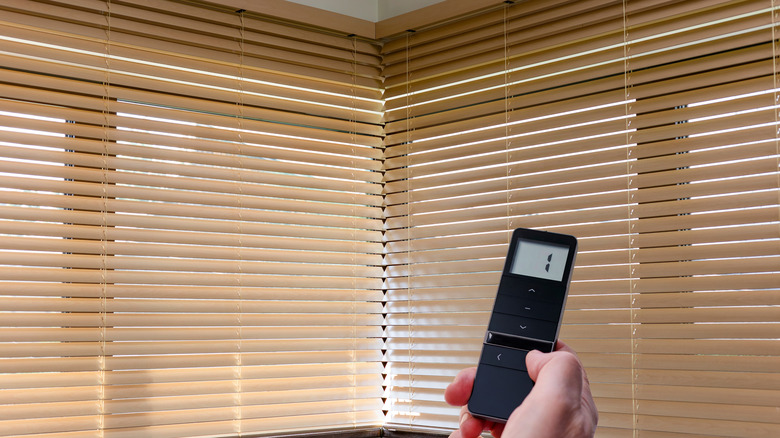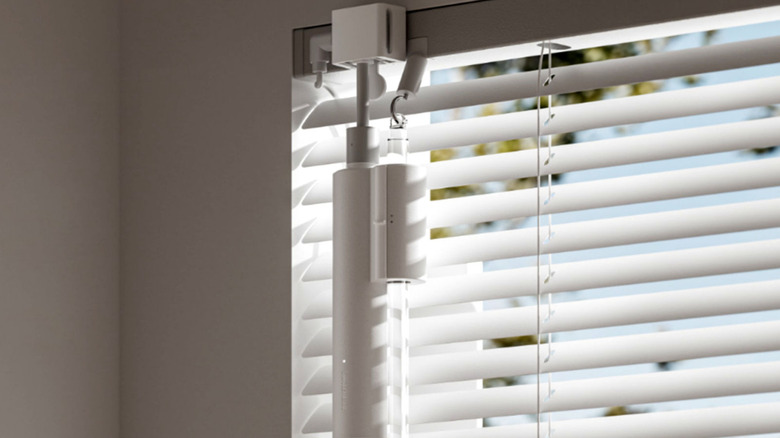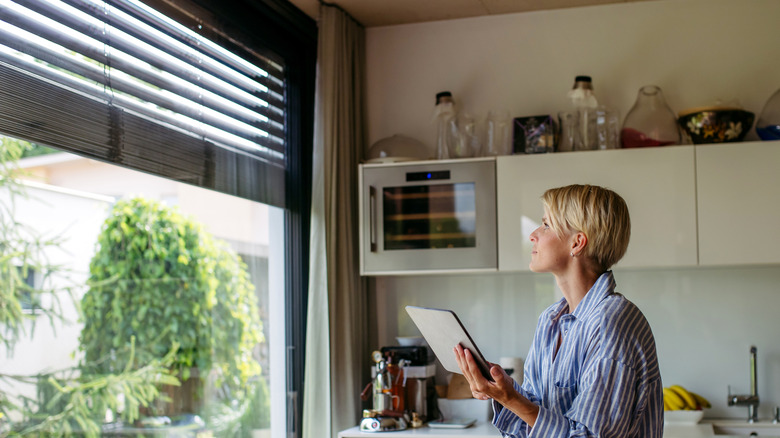Here's How To Convert Your Basic Blinds Into Smart Blinds
There are so many reasons why you need smart window treatments in your home, and turning your ordinary blinds into smart blinds offers more than just remote control convenience. This upgrade brings improvements to energy efficiency, home security, and daily comfort while preserving your existing window covering. Retrofit kits are available to turn almost any standard blinds into automated systems that can respond to remotes or personalized schedules. Unlike a full replacement that could cost hundreds of dollars per window, these devices will attach directly to your current blinds for a much cheaper price.
The technology behind it focuses on automating the two main blind functions: tilt adjustment, which changes the slat angles, and the lift mechanism, which raises and lowers your blinds. These two controls allow you to control the light entering your home throughout the day, blocking intense midday sun while allowing in the softer evening light. Properly controlling light through your windows can reduce your cooling costs by minimizing heat gained through windows during the summer. Smart blinds can also enhance home security by setting programmable patterns that replicate the look of someone being home. Most systems will mix easily with popular smart home platforms like Google Assistant, Amazon Alexa, and Apple HomeKit, allowing multiple products to be controlled without a ton of different apps.
The blind conversion process
Converting your normal blinds is a fairly straightforward process that you can easily do without professional help. For slat blinds, you'll begin by cleaning the existing tilt wand, the plastic rod that you spin to adjust the angle of the slats. Most conversion kits will have a little adapter that clips directly onto the tilt mechanism. Depending on your current blinds setup, you'll clip a small adapter and coupling directly to the wand. Next, secure the motor to the top of the blinds using the provided bracket that comes in your kit. Lift-style blinds will require a slightly different installation, usually having you replace the entire top roll mechanism with a motorized tube that connects to your blind's fabric. There are some small kits available if you have the chain-lift mechanism on your blinds. These anchor onto the wall and automate the chain with internal gears.
Power options will vary by model. Battery-powered units are the simplest to install on your own, typically requiring battery replacements once or twice a year. Hardwired models provide continuous power but may need a professional to install them if an electrical outlet isn't easily available. After installation, download the manufacturer's app and connect the device to your phone. This is where you'll get to configure the advanced features and help keep your house cooler with your new smart blinds.
Is converting cheaper than buying new smart blinds?
Converting your blinds is going to be cheaper than getting brand-new smart blinds installed. Basic tilt-only conversion kits start at around $70 per window, while new smart blinds can cost anywhere from $100 to $500, depending on features and size. If you've decided on a battery-powered kit, you may want to include the occasional battery replacement in your price breakdown. Hardwired models eliminate the continued battery expense, but may require a professional installation, adding to the upfront costs.
These motorized shades not only improve accessibility for light management but also provide energy savings that will offset some of the initial costs over time. Automated blinds, when programmed to correctly block the sun during peak midday hours, can reduce your air conditioning needs. You could even qualify for a tax deduction for installing smart window treatments, so be sure to check if there are any energy-efficiency programs you can take advantage of.


